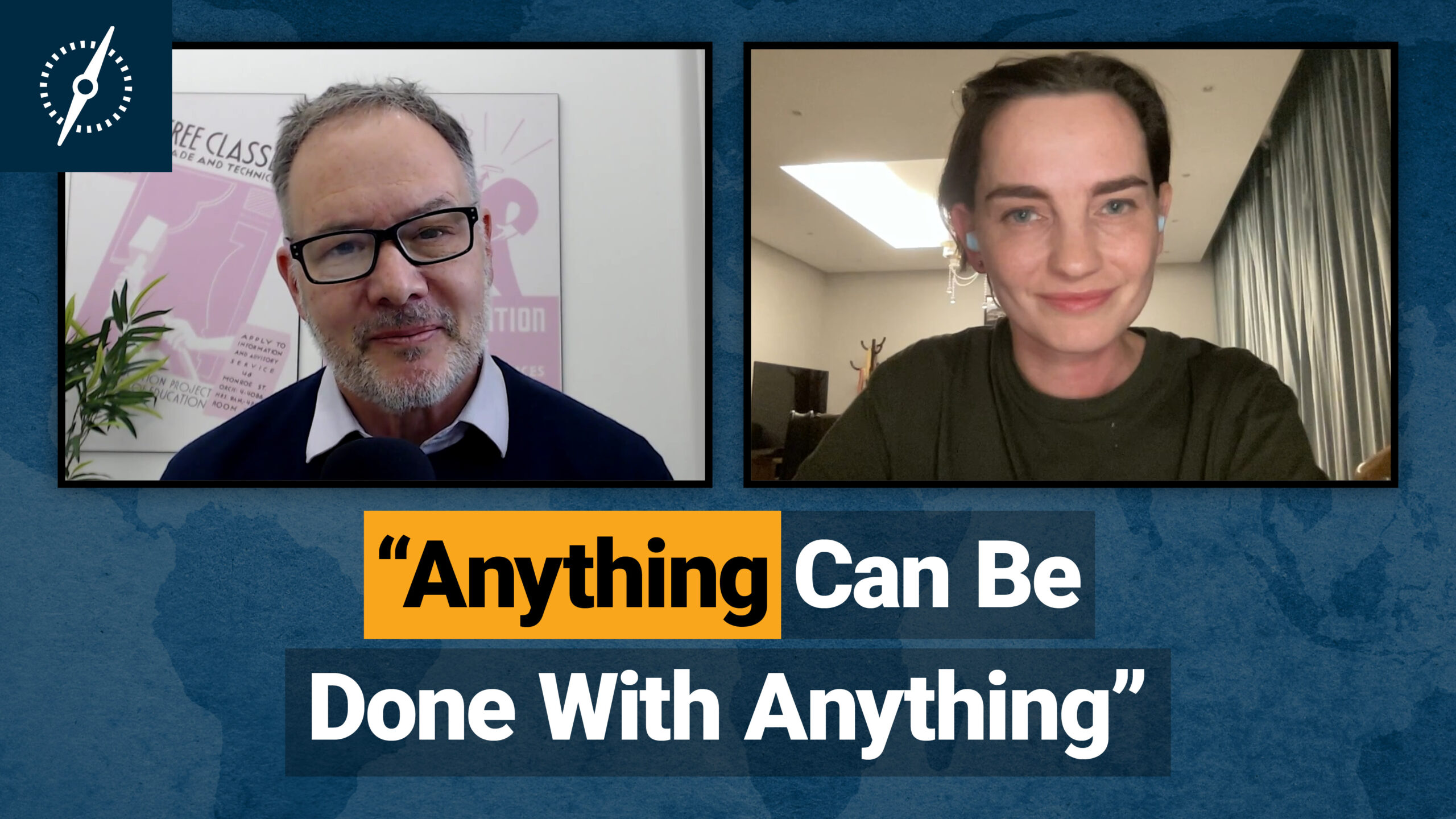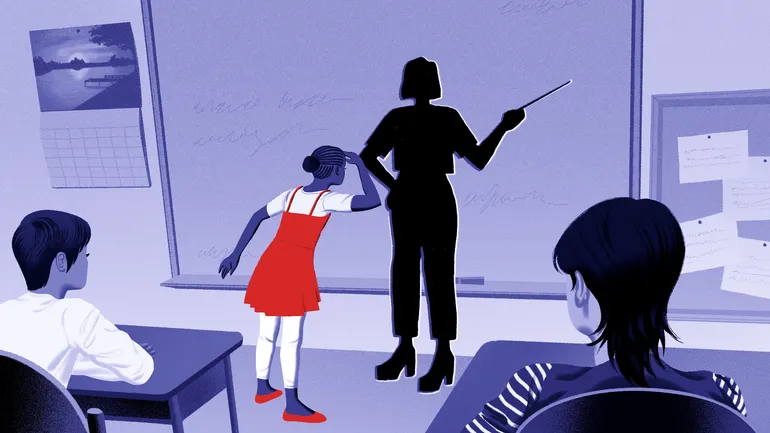There’s an old joke about innovation in higher education. It goes like this: How many universities does it take to screw in a lightbulb. Change?
Maybe that’s a bit unfair, but it’s unquestionable that the sector isn’t famed for welcoming change, in particular radical change. One particular aspect is what is called isomorphism – the tendency of all institutions to look the same because they are copying some “ideal” model university (think Harvard or Oxford); indeed, that institutions which don’t copy the model followed by “prestige” universities must ipso facto lack “quality”.
But innovation does happen. It’s just not always widely noticed or celebrated. But there is one regular webinar that is trying to change that, and that’s the Innovative Universities Global Webinar Series. Based at Constructor University in Germany, it’s co-hosted by two fantastic higher education researchers. One is Isak Frumin, who joined our podcast last year to talk about post-Soviet universities, and the other is today’s guest, Dara Melnyk.
We invited Dara onto the show today to discuss what she and Isak have discovered about innovative universities over the course of their webinar series. What are the catalysts for innovation in higher education? What kinds of structures or leadership are required to sustain innovation? Does the innovation process look different in different parts of the world? I found this an absolutely delightful conversation, mainly because Dana’s job allows her to delve deeply int topics that I wish I could spend more time on myself, and this was a chance for me to live that life vicariously. I hope you find her as insightful as I did. And so without futher ado: over to Dara.
The World of Higher Education Podcast
Episode 3.26 | “Anything Can Be Done With Anything”: Innovative Universities with Dara Melnyk
Transcript
Alex Usher (AU): Dara, how did the Innovative Universities Global Webinar come about? What was the motivation to create a platform specifically focused on institutional innovation in higher education?
Dara Melnyk (DM): So, there were practical reasons—I’d say three of them—and one completely impractical reason.
The first practical reason is that we truly believe innovative universities are important. They’re useful because they test new approaches, and when those approaches are successful, other universities adopt them. That’s how you upgrade higher education systems. It’s, I think, one of the most powerful—and also most ethical—mechanisms for institutional change, as compared to implementing strict policies.
The second practical reason is tied to my work. I’ve been consulting and advising universities for the past decade, and it’s simply easier to talk about universities when you can use extreme cases. These cases make for good examples, and innovative universities really have to get that one thing at the core of their distinction exactly right. They can typically articulate what they do very clearly, which makes it efficient to learn from them. For example, a lot of universities practice PBL, but if you want to really understand how it works, it makes sense to go to the core—to McMaster University, Maastricht University, whichever you prefer.
The last practical reason is that innovative universities often have to fight private battles with regulators. They’re constantly trying to bridge the gap between their vision and the realities of everyday practice, and that can get pretty isolating. So we thought it would be helpful to create a gallery of cases, where university leaders could speak about their ideas and challenges—and where others could learn from those stories and feel a bit better about their own practice.
And finally, the impractical reason—I promised you one of those! Isak, my co-host, and I have this acute curiosity about higher education. Innovative universities intrigue us. They surprise us. They’re hopeful. And most importantly, they make us question what we believe about higher education.
AU: How do you go about selecting cases? What is it that makes a university truly innovative? Is it technology, governance, pedagogy? And how long do you have to wait to know if it’s an innovation worth copying?
DM: Okay, so there are two questions here. First, about selecting cases—I’d love to tell you that we have a long, strict list of criteria, that we run them through models or maybe Excel files or something like that. But truly, we just follow our gut feeling. If something gives us pause, it might do the same for the audience. That’s how we choose. Someone tells us about an institution, and we think, “Okay, this is interesting—how do they do it?” And that’s when we decide to feature it.
Now, in terms of what makes a university innovative, we mostly focus on innovations that are constitutive, not auxiliary—meaning they’re absolutely necessary for that specific university model to function. We do also like looking into innovations in the operational model. But typically, we concentrate on innovations in the core—so, in teaching and learning—because that seems to be the very essence of the idea of the university.
AU: In your experience, I’m wondering to what extent institutions innovate for—how can I put this—internal reasons, as opposed to external challenges. What kinds of external challenges or changes in the environment, I guess, force institutions to rethink their model? And how often is it those external forces that are decisive in making institutions take that turn toward innovation?
DM: I feel it’s not that cut and dried. While universities do sometimes respond to external forces or challenges, they also just as often stand idly by—disallowing what’s happening. Not in the sense of ignoring it, but rather acknowledging it, addressing it, and then denying any responsibility for taking action. That happens just as frequently.
What I think triggers innovation more reliably is what I would call inflection points—periods in history when norms start shifting, and people begin to question what they believe in and what is right. And while that’s happening, you can sneak in something truly unusual.
The largest and longest inflection period we’ve seen was probably in the 1960s and 1970s, when a lot of things were changing. Gender norms and generational roles were being questioned, there was widespread discontent with U.S. foreign policy and levels of inequality, and in Europe there was a kind of religious rebellion. That’s how we ended up with, I think, almost half of the cases in our collection.
And possibly, we are living through an inflection period now as well. We’re seeing technological shifts, a new political order—or, as The Economist recently and aptly put it, “disorder”—emerging, as well as climate wars. Institutions are responding to all of that, but they’re also enabled to respond, because no one is quite sure what the correct university model is right now. For a time, that uncertainty creates room to innovate. I think at some point, it will settle again—and innovating will become difficult.
AU: It seems to me that innovations require a pretty careful mix of institutional structures, leadership styles, funding mechanisms—these could be internal or external. Is there any configuration that you think is more likely to support long-term change?
DM: First of all, anything can be done with anything. We’ve seen the most fascinating cases of innovation happen under really severe constraints. But at the same time, there are factors that significantly contribute to innovation. I’d classify them as stories, leaders, and policy.
Starting with stories: if a university community believes it must innovate—for whatever reason, whether to be a pathfinder, to show other universities the way, or to solve problems because it has a vision it’s trying to implement—then it keeps solving issues in order to make that vision real.
When it comes to leaders, personal drive matters. And you actually need several people with that drive, because they’ll argue, they’ll compete, they’ll collaborate—and ultimately, they’ll move the university forward. No university leader is an island, to paraphrase John Donne. No team, no vision, no innovation, ultimately.
And finally, policy. I think you’d agree there needs to be sufficient autonomy to experiment. It sounds like a basic statement—like something you hear in every second university president’s speech—but universities are often quite limited by licensing and accreditation regulations. And also by something I’d call self-arrest, borrowing from Antony Giddens: playing it safe just in case, keeping still, not rocking the boat.
So autonomy is really important. I love the title of the book by Bartlett Giamatti about universities—The Free and Ordered Space. I’ve been obsessed with that phrase. It seems incredibly relevant to universities, because, well—there is no order if you don’t have freedom. Freedom is the basis of order for universities.
AU: Dara, your series features universities from all over the world. I’ve been so impressed by the way you’ve been able to go to various corners of the globe. What’s your impression about how the approach to innovation differs regionally? So, is there a North American path to institutional innovation that’s different from what you see in Europe or Asia? Is it about philosophy? Is it about traditions? I mean, what are the differences you see globally?
DM: I think it’s about problem fields. A problem field is a cluster of issues you have to navigate and somehow address—quote in your design—for sponsors to even consider investing, for students to consider coming, and so on.
If I were to walk you through the regions—this is a really rough typology at the moment, but still—
For Africa, the problem field is the trifecta of affordability, quality, and regional relevance. That last part is sometimes interpreted as decolonization, but I think it’s more than that.
Asia is incredibly diverse, both economically and culturally. I’d say China seems especially concerned with identifying its own way and positioning universities as economic drivers—meaning actual partnerships between higher education institutions and industry. And in developing countries, I think it’s mostly about securing social mobility for students.
Now, traveling to North America—we’ve only looked at the U.S. so far; Canada is pending—it’s also very much centered on affordability. But with the University of Austin—not to be confused with the University of Texas at Austin—we’re seeing a return to thinking about and experimenting with what a university should be in the first place. That sounds a bit like the 1960s to me. So, we’ll see what happens there.
And finally, Europe is all about Europe—Europeanness. Its largest innovation, the European University Networks, is centered on that. And apart from this sense of Europeanness, there’s a lot of attention to innovative and experimental pedagogies, partly in response to demographic changes.
AU: About a year ago, we had a guest on the show, Brian Rosenberg—you’ve probably read his book, Whatever It Is, I’m Against It. He painted a picture of American institutions as being very resistant to innovation, basically because there are too many points of veto within the institution. What are the biggest obstacles you see preventing universities from adopting innovative practices? Are you as pessimistic as Brian? How do you get around that tendency toward inertia?
DM: I am definitely not as pessimistic as Brian—maybe because I don’t live in the U.S. I hope the land down below Canada won’t be offended by that!
Now, talking about obstacles, there are both external and internal ones. Externally, they’re quite plentiful, but I think it boils down to a conflict between open and closed systems. A higher education system is either welcoming—in narrative and policy—to innovation, or it’s not. And the way to overcome that barrier usually involves promotion, and often lobbying, for the importance of innovative universities.
According to our observations, successful, innovative universities are typically led by talented lobbyists. You have to be able to fight back—to be an actor, not just an agent, in the national conversation.
Now, for internal obstacles, the biggest one is a lack of critical discussion about the organization. If people can’t voice issues or share ideas—because, for example, they’re afraid to—then nothing changes, and nothing will change. So, step one is to create a platform for that discussion. And step two is not just to invite people to share their opinions—or embolden them, if you can—but to actually carry the conversation through to real projects. Try something out. It may or may not work, but at least you’ve tried. And then you can try again. That’s how you become an innovative institution.
AU: What’s the most innovative institution you’ve seen? I know you’ve done dozens of these around the world. What’s the one that really affected you the most—one that you thought was the most interesting to think about or to look at?
DM: It doesn’t really work like that. We tend to get excited about every single institution we look at. The more attention you pay to one, the more fascinated you get. For me, it’s typically the last case—either the one we just covered or the one we’re about to cover.
So, the case we just covered is Roskilde University in Denmark, which is a cousin of McMaster University. They’re just wonderful. They have their own proprietary methodology—problem-oriented project learning—and they keep introducing new innovations. If you look at the news page on their website, it’s not just updates about research outcomes and student results. It’s also things like, “We’re going to introduce this,” or “We’re thinking about that.”
And the case we’re going to cover very soon, in a couple of days, is Tidelines Institute. It’s a micro-college. There’s a proper definition for that, but I like to define micro-colleges as institutions where everybody knows everybody.
Tidelines is located in the Alaskan wilderness and sees itself almost as complementary to traditional higher education institutions. It’s not a disruptive institution—it’s a complement. It’s an addition. It offers experiential learning through short-term projects for students. They can come for six months or even just a couple of weeks and learn something amazing by doing.
AU: So, based on all these conversations you’ve had, what are the big themes that you think might affect—for lack of a better word—the university of the future? Obviously, there’s not one university of the future; there are lots of different possibilities and roles for individual institutions to play. But are there specific themes emerging from your research that you think might become a more hegemonic—or dominant—blueprint for higher education in the coming decades?
DM: Some things are clear. First, affordable university models will keep appearing—because everyone wants them to. For that, you might look at NewU University in Washington, DC. It’s a really brave and persistent case that I admire deeply. Or the African Leadership University, which Brian Rosenberg—whom you mentioned—is an advisor to.
Second, universities will implement more technology. We all know it; everybody talks about it. I’d recommend looking at MEF, a Turkish university, to see what they’re doing. They’re quite systematic in implementing new technological solutions.
Third—and almost as a mirror to that technological implementation—universities will also have to compete with online platforms. They have to offer something no one else does. I really like the idea of Forward College, which is an itinerant college in Europe. Students study in Lisbon for their first year, Paris for their second, and Berlin for their third. Forward College believes that relational pedagogy should lie at the core of education—the relationship between teacher and student as the driver for learning. I think that has its place, maybe even a central place, in universities. These are the spaces where generations meet, and that should be used and leveraged.
That said, I want to make a slightly extended comment about innovation. I’m not sure if Isak would agree, but even though I research innovative universities, talk about them, and write about them, I don’t truly believe in innovations in higher education. I don’t think they’re possible.
Lately, I’ve been reading and listening to things about ancient Greece and ancient Greek education—and also listening to Bastille, because for me, that’s connected. There’s a line in their song Pompeii: “But if you close your eyes, does it almost feel like nothing changed at all?” The more I learn about innovative higher education, the more I believe in two things: first, nothing will fundamentally change; and second, nothing should.
On that first point—about the lack of fundamental change—most innovations are reimaginings. We keep reimagining ideas that have already been discussed, that have already been tried, throughout the couple of thousand years of higher education history.
And on the second point—maybe that’s not such a bad thing. Maybe it’s something universities should retain. They are organizations that manage knowledge. They gain knowledge through research, they transmit it through education, and they apply it through technology transfer. The formats might change, but at their core, universities should remain the one type of organization responsible for the complete knowledge cycle. Everything else seems secondary to me.
AU: Dara Melnyk , thanks so much for joining us today. And it just remains for me to thank our excellent producers, Tiffany MacLennan and Sam Pufek—and you, our viewers, listeners, and readers—for joining us today. If you have any questions or concerns about today’s episode, or suggestions for future ones, please don’t hesitate to get in touch with us at [email protected]. Run—don’t walk—to our YouTube channel. Subscribe to it so you never miss an episode of The World of Higher Education. Join us next week when I’ll be joined by Nicolas Badré, the Chief Operating Officer of the Galileo Global Education Group. We’ll be talking about the rise of private higher education in Europe and the Galileo Group’s fascinating experiments with artificial intelligence in teaching and learning. Bye for now.
*This podcast transcript was generated using an AI transcription service with limited editing. Please forgive any errors made through this service. Please note, the views and opinions expressed in each episode are those of the individual contributors, and do not necessarily reflect those of the podcast host and team, or our sponsors.
This episode is sponsored by Studiosity. Student success, at scale – with an evidence-based ROI of 4.4x return for universities and colleges. Because Studiosity is AI for Learning — not corrections – to develop critical thinking, agency, and retention — empowering educators with learning insight. For future-ready graduates — and for future-ready institutions. Learn more at studiosity.com.





